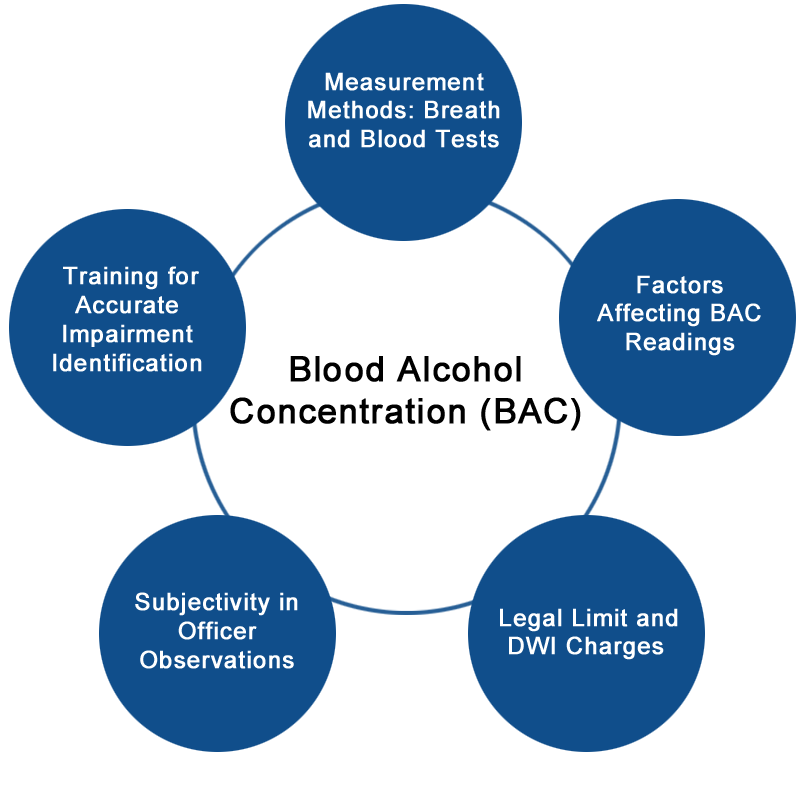Legal Alcohol Limit & DWI and BAC Limit in Texas
In Texas, as elsewhere in the country, a person’s level of intoxication is generally measured by your Blood Alcohol Concentration (BAC). This metric is used to determine whether a person has reached the legal limit of alcohol in their bloodstream beyond which they legally cannot operate a motor vehicle.
While the concept of BAC is grounded in science, the way it is measured can make its readings highly subjective. As it is generally measured through breath or blood, it cannot take into account factors such as an individual’s weight, age, metabolic rate, natural or obtained alcohol tolerance or the presence of other mitigating substances.
Adding to this, a law enforcement officer is given leeway to determine overall sobriety based on factors beyond BAC levels, including physical issues like slurring of speech or bloodshot eyes, issues with their driving such as swerving or outside elements like a background odor of alcohol. Essentially, even if someone is found to be below the legal limit of .08%, they may still be charged with driving while intoxicated (DWI).
While giving officers the ability to judge sobriety on their own observation is part of DWI laws’ ability to protect public safety and deter impaired driving, it does introduce the possibility for subjective judgement. When factors are involved that can skew what an officer observes – such as the individual having a medical condition or simply being highly fatigued – it can lead to false arrests for DWI.
Because the methods used to assess impairment are so subjective, it is vital that officers be properly trained to identify impaired drivers accurately, minimizing false arrests by also recognizing external factors that can mimic indicators of intoxication.
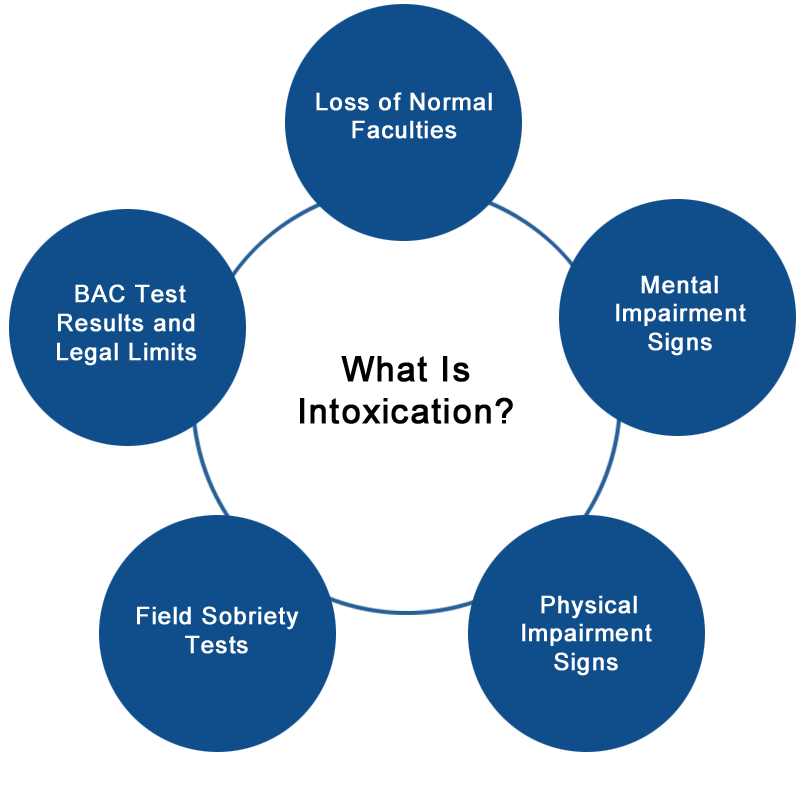 Intoxication: The Legal Definition
Intoxication: The Legal Definition
The legal framework surrounding the term “intoxication” is designed as a reflection of both an individual’s BAC and the physical signs of intoxication they show. Having such a rigid definition, there are several criteria that must be met in order to determine intoxication.
The first criterion is the loss of normal faculties. This is a measurement of the factors an officer can observe in determining whether an individual can safely operate a motor vehicle. It includes signs of mental impairment (attention or memory problems, judgmental impairment, delayed reaction times) as well as physical impairment (problems maintaining balance, slurred speech, difficulty driving). These signs are evaluated through field sobriety tests such as the one-legged stand test, walk-and-turn test and horizontal gaze nystagmus test.
The second criterion is the result of a BAC test, measured either through breath or blood. Under Texas law, a BAC of .08% or above is all that is required for an individual to be considered intoxicated. Referred to as DWI “per se,” this demonstrates that even without showing any physical signs of impairment, an individual can be prosecuted for DWI.
Utilizing both of these criteria allows law enforcement to more comprehensively address DWI, giving them leeway to prosecute in different scenarios where a driver may be impaired.
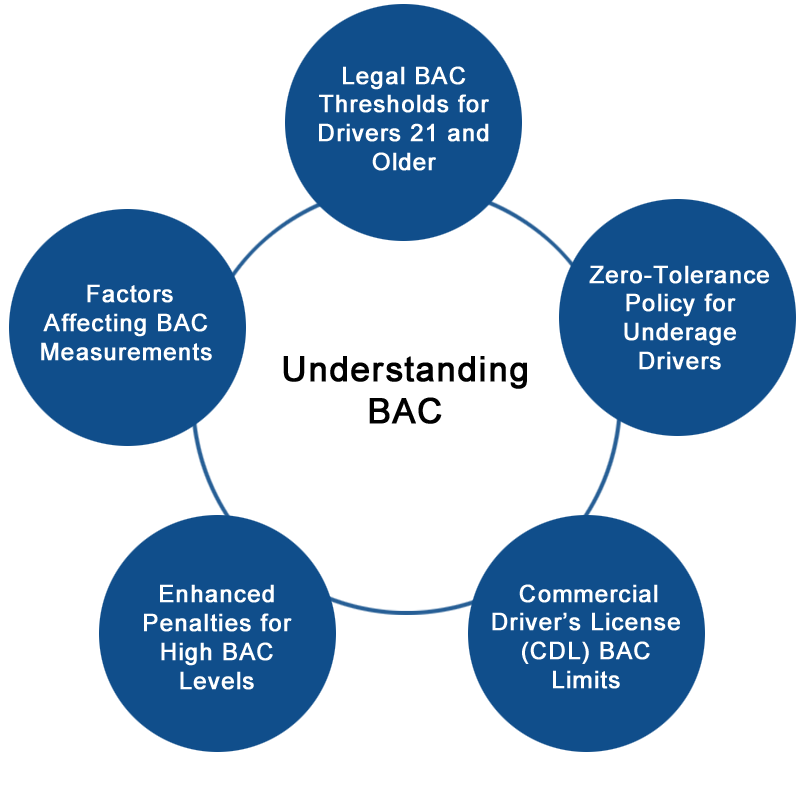 Understanding BAC
Understanding BAC
Under Texas law, drivers 21 years of age and older are considered impaired when they show a BAC of .08% or higher. If a driver tests above that threshold, they can be prosecuted immediately for DWO without additional impairment. However, drivers who demonstrate a BAC between .01%-.07% can still be arrested if they show further observed signs of impairment. Even a BAC of 0.0% can result in a DWI if the driver shows signs of impairment due to drugs or other substances.
A driver facing DWI charges can expect greater repercussions if they are found to have a BAC of .15 or higher. There are also more significant penalties if the driver is found to have an open container in the vehicle. If a child under the age of 15 is present in the vehicle, a DWI can be classified as a felony.
There are additional legal ramifications that face drivers who are under 21 or who hold a commercial driver’s license (CDL). Those under 21 are subject to Texas’ zero-tolerance policy, under which they can be prosecuted for DWI or driving under the influence (DUI) with a BAC that shows any detectable signs of alcohol.
Those holding a CDL can be charged with DWI if they are found to have a BAC above .04%, even if they are driving their personal vehicle at the time. As outlined in Texas Transportation Code §522.081, those CDL holders found guilty of DWI face greater repercussions than other drivers. Those who have been convicted of DWI can be barred from applying for a CDL for up to three years under Texas Penal Code § 49.
There are so many variables that go into measuring a BAC that it’s nearly impossible to say with any certainty how many drinks would put an individual above the legal limit. Even the scent of alcohol on a person’s breath is enough to justify an arrest, so the safer plan is generally to take a taxi or rideshare when in doubt.
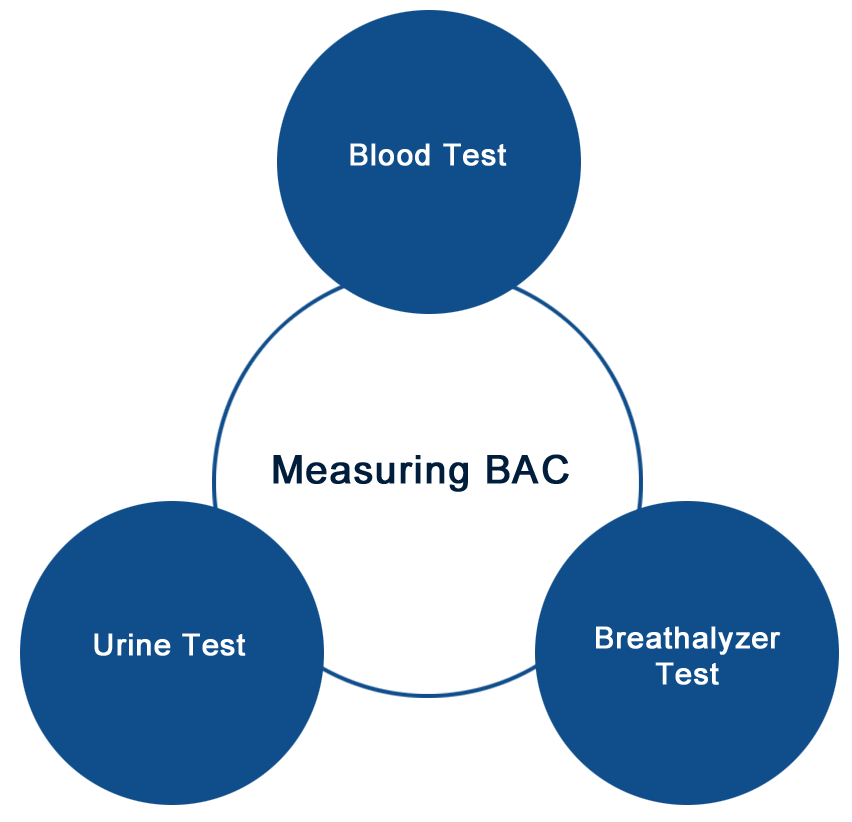 Measuring BAC
Measuring BAC
There are several ways that a BAC can be measured:
Breathalyzer Test: The most commonly used test, this measures the amount of metabolized alcohol present in the driver’s breath using either electrochemical fuel cell technology or infrared spectroscopy. The device currently used in the state of Texas is the Intoxilyzer 9000. As with most devices, it requires regular maintenance to function properly.
What’s interesting about the Intoxilyzer 9000 is the relatively small sample size it requires. Using a complex formula, the device estimates the amount of alcohol that would be present in 210 liters (around 7.4 cubic feet) of a person’s breath. While this is inexact, with proper calibration it should be able to measure within a margin of error of +/- .01%. Even with this possibility of inaccuracy, breathalyzer results can be used as probable cause.
Administered on the roadside, this test allows for immediate results.
Blood Test: In cases where a breathalyzer’s results are contested, or when there has been an accident with injuries, law enforcement may subject drivers to a blood test, requiring further laboratory analysis. Rather than being performed at the roadside, a blood test will be carried out by a trained medical professional. The sample is transported to a laboratory where it will be measured to determine the alcohol concentration in 100 milliliters of blood.
The method used is called gas chromatography, which involves adding chemicals to the blood that extract the alcohol. The prepared blood sample is then inserted into a machine that separates the elements of blood and measures the separate components inside a chromatography column.
While these readings provide an accurate reading of the alcohol present in the blood, there are several variables that can skew results, such as procedural errors, transportation issues and improper calibration.
Urine Test: While less practical than other tests due to the length of time it takes alcohol to appear in urine, this test is often used for special legal or medical reasons. The sample is first collected under the supervision of medical personnel or law enforcement, and then transported to a laboratory. As with blood tests, the sample is prepared by the addition of certain chemicals before it is sent for analysis. This analysis can be done by gas chromatography or by enzymatic analysis which detects specific enzymes in the urine that indicate alcohol. The results are then given as a measure of alcohol in 67 milliliters of urine.
A urine test will generally not be as accurate as a blood test in determining intoxication, and can be skewed by the same variables.
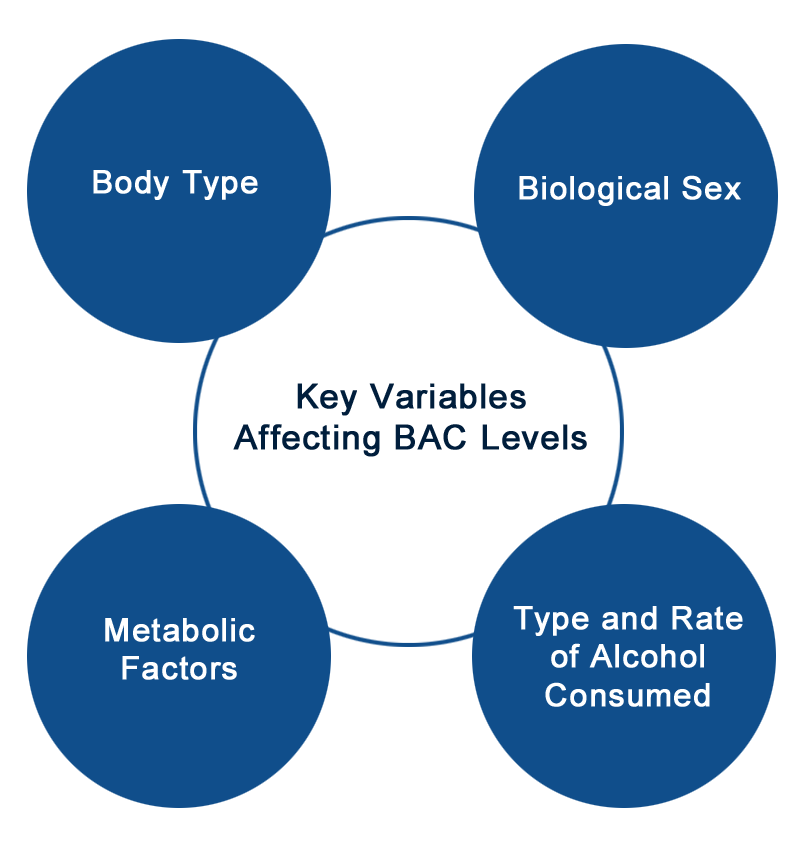 Variables That Can Impact BAC
Variables That Can Impact BAC
The general rule of thumb when it comes to BAC is that an individual can reach .08% by consuming a standard-sized alcoholic drink per hour. Obviously, this is subject to a number of mitigating factors including:
Body Type: An individual’s capacity for alcohol is not just a question of how much they weigh. Generally, the larger the person, the more they can consume without raising their BAC to the legal limit as there is more body mass in which the alcohol is dispersed. That said, those whose weight comes primarily from a higher body fat percentage can actually demonstrate higher BAC since their body fat does not absorb alcohol.
Biological Sex: Women typically demonstrate higher BAC than men, even removing other factors such as age and weight. This is due to a few physiological differences between the sexes. For one, women naturally have lower levels of alcohol dehydrogenase, one of the enzymes that metabolizes alcohol. In addition, metabolic differences and differences in body composition can skew BAC results in women.
Metabolic Factors: Not only do metabolic rates vary wildly from person to person, but the amount of food being metabolized at the time can change BAC results. The food in an individual’s stomach will absorb alcohol before it can reach the small intestine, blocking it from absorption. Conversely, an empty stomach will allow alcohol to be absorbed into the bloodstream much faster.
Type and Rate of Alcohol Consumed: As drinking alcohol rapidly gives the body less time to properly metabolize alcohol, it can lead to a higher BAC. Additionally, drinking spirits with a higher alcohol content by volume (ABV), such as hard liquor or cocktails, will raise an individual’s BAC faster than beer or wine would.
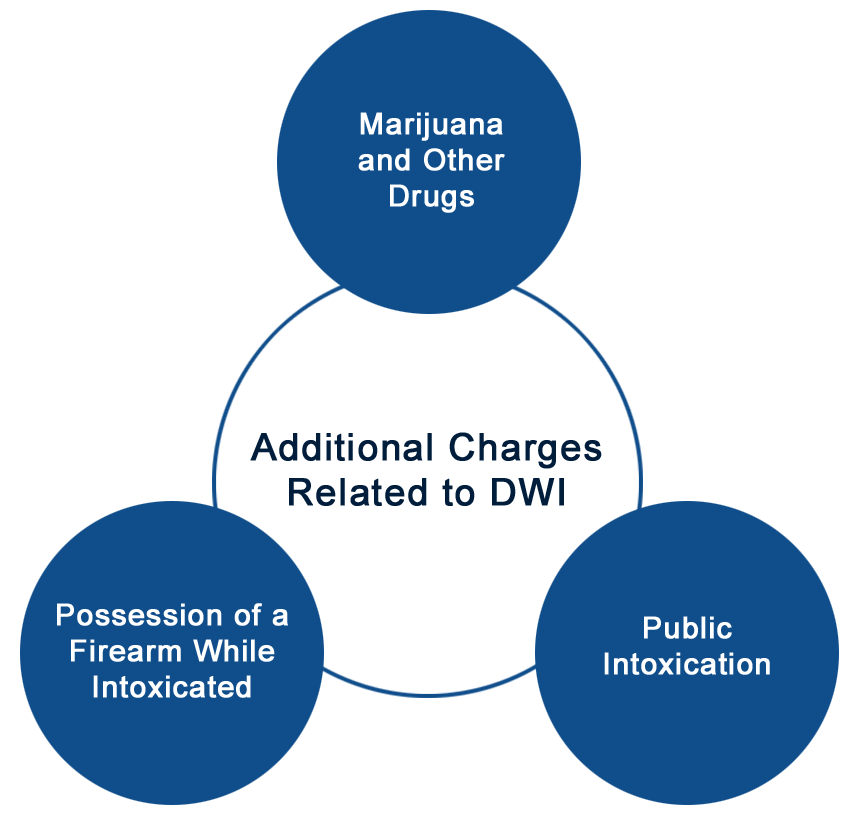 Charges Beyond DWI
Charges Beyond DWI
So far, we’ve discussed how alcohol is measured in the system and how measurable BAC can lead to a conviction for DWI. However there are more ways that intoxication can lead to incarceration in Texas.
Marijuana and Other Drugs: Illegal in the state of Texas, marijuana has its own legal limit, set at 5 nanograms of THC per milliliter and typically measured by a blood test. For other drugs, there is no set legal limit, and the presence of any amount in the blood can lead to a DUI charge. First-time offenders for drug-related DWI or DUI could face a class B misdemeanor charge carrying a jail term between 72 hours and 180 days, plus fines up to $2,000.
Public Intoxication: Intoxication is defined much as it is with a DWI, as a lack of mental or physical control of your own faculties due to drugs or alcohol, with the same legal BAC limit of .08%. Demonstrating intoxication in a public place to the point of posing a threat to themselves or others is usually considered a class C misdemeanor.
Possession of a Firearm While Intoxicated: Considered a serious offense, this applies when an individual is found in a public place – including roads or highways – under the influence while carrying a firearm.
In addition, Texas law includes penalties for those found boating while intoxicated. In cases where a person’s intoxication leads to the injury or death of another, they can be charged with intoxication assault, a third-degree felony, or intoxication manslaughter, a second-degree felony.
Challenging a DWI Charge
There are several ways to contest charges of DWI, public intoxication, possession of a firearm while intoxicated, or any of the charges we’ve discussed here.
One strategy would be to question the accuracy or proper usage of testing equipment that was used to measure the breath, blood or urine. A defense attorney may enlist expert witnesses to raise questions regarding the equipment, the results or the validity of the testing methods. It is also possible to employ the “rising blood alcohol” defense, positing that the defendant’s BAC was below the legal limit when the arrest occurred, and increased beyond the limit before they were tested.
Those are just a few of the strategies that may be used, along with challenging the validity of field sobriety tests, providing further context for physical or observed symptoms of intoxication, or questioning the legality of the initial traffic stop.
At the Law Office of Ken Gibson, we know that knowledge is power. Pursuing these winning strategies requires thorough preparation and a comprehensive understanding of the case at hand. Combined with our attorney’s rich knowledge of Texas law, this exhaustive approach helps us tip the scales in your favor, ensuring the best possible outcome.
Call (512) 469-6056 or Schedule a Free Case Evaluation Online

